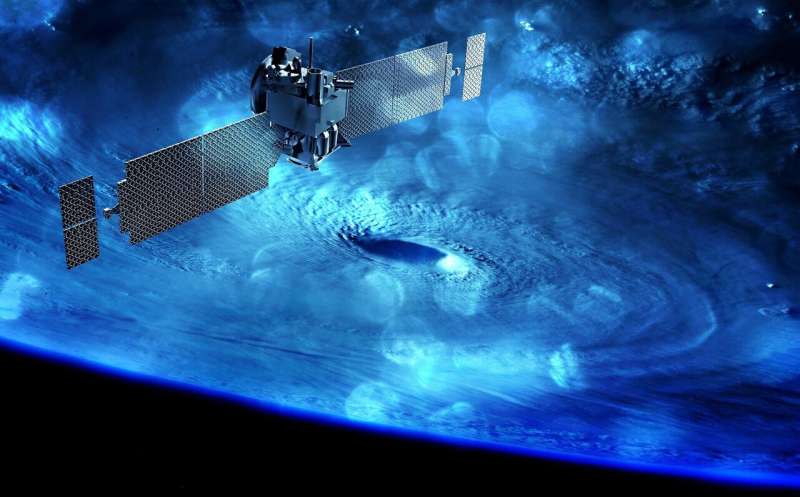Viasat shoots for early 2023 to launch the first of 3 terabyte-class Internet satellites

Carlsbad, California's Viasat said Tuesday that it expects to begin launching its next-generation broadband Internet satellite constellation early next year—marking another delay in getting the terabyte-class satellites into orbit.
This pushback in timing is minor. It's being driven by other missions that are lining up for the same launch facility, according to the company.
The first of three ViaSat-3 satellites has completed testing and is ready to ship to the unidentified launch site in December, said Chief Executive Mark Dankberg.
"At this point, we can't give a specific launch window other than first quarter of calendar 2023, but we are targeting the early part of the quarter and are working with SpaceX to launch as soon as possible," said Dankberg in a conference call with Wall Street analysts.
The Viasat-3 constellation is made up of three satellites, each with about 1.5 terabits per second of maximum capacity. It aims to deliver faster speeds and more affordable data to airlines for in-flight Wi-Fi, rural homes of residential Internet, as well as to oil rigs, cruise ships and government customers. It supplies in-flight Internet to Air Force One and other government VIP aircraft.
The satellites were supposed to be ready for launch beginning in 2020, but pandemic shutdowns and supply chain shortages delayed those plans.
Meanwhile, stiff competition has popped up from emerging low-earth orbit satellite Internet providers—most notably Starlink from Elon Musk's SpaceX.
Starlink has launched more than 2,500 small, low-earth orbit satellites so far. It is offering service across the U.S. and worldwide, including assisting Ukraine in its war with Russia. It has garnered an estimated 400,000 users since October 2020.
Eventually, Starlink hopes to have around 40,000 satellites in its low earth orbit. Competitors including OneWeb, Amazon's Project Kuiper and others, also have proposed constellations of thousands of satellites.
"Despite Viasat's three-year delay (and counting) in deploying its ViaSat-3 constellation, making Starlink's and others' initial customer ramps easier than might have been the case, we believe demand continues to outpace capacity, and that Viasat will realize substantial return on investment from its ViaSat-3 investment," said Mike Crawford, an analyst with B. Riley Securities/Discovery Group in a research report.
Some in the satellite industry, including Viasat, have raised concerns about environmental impacts of mega low-earth-orbit constellations, including the potential for collisions that could create large, fast-moving debris fields that render some orbits dangerous.
The first ViaSat-3 satellite will provide service to the Americas. Around the middle of 2023, the company will blast off a second ViaSat-3 into orbit to cover Europe, the Middle East and Africa.
A third satellite is in the works to serve Asia/Pacific—giving the Viasat global coverage. The exact timing of that launch hasn't been pinned down yet.
2022 The San Diego Union-Tribune.
Distributed by Tribune Content Agency, LLC.



















